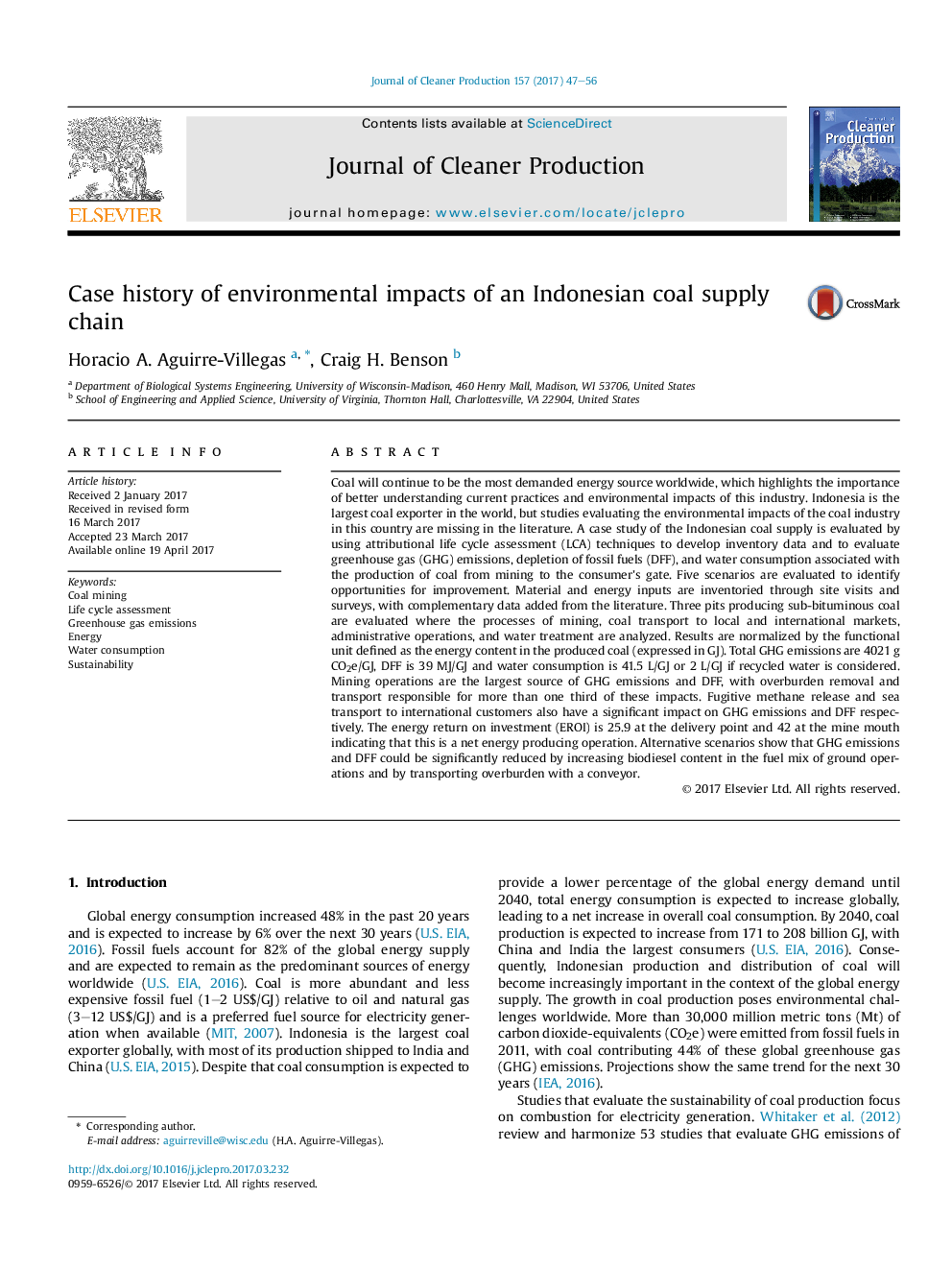| کد مقاله | کد نشریه | سال انتشار | مقاله انگلیسی | نسخه تمام متن |
|---|---|---|---|---|
| 5481162 | 1522097 | 2017 | 10 صفحه PDF | دانلود رایگان |
عنوان انگلیسی مقاله ISI
Case history of environmental impacts of an Indonesian coal supply chain
ترجمه فارسی عنوان
تاریخچه مورد بررسی اثرات زیست محیطی زنجیره تامین زغال سنگ اندونزی
دانلود مقاله + سفارش ترجمه
دانلود مقاله ISI انگلیسی
رایگان برای ایرانیان
کلمات کلیدی
استخراج از معادن زغال سنگ، ارزیابی چرخه حیات، انتشار گازهای گلخانه ای، انرژی، مصرف آب، پایداری،
موضوعات مرتبط
مهندسی و علوم پایه
مهندسی انرژی
انرژی های تجدید پذیر، توسعه پایدار و محیط زیست
چکیده انگلیسی
Coal will continue to be the most demanded energy source worldwide, which highlights the importance of better understanding current practices and environmental impacts of this industry. Indonesia is the largest coal exporter in the world, but studies evaluating the environmental impacts of the coal industry in this country are missing in the literature. A case study of the Indonesian coal supply is evaluated by using attributional life cycle assessment (LCA) techniques to develop inventory data and to evaluate greenhouse gas (GHG) emissions, depletion of fossil fuels (DFF), and water consumption associated with the production of coal from mining to the consumer's gate. Five scenarios are evaluated to identify opportunities for improvement. Material and energy inputs are inventoried through site visits and surveys, with complementary data added from the literature. Three pits producing sub-bituminous coal are evaluated where the processes of mining, coal transport to local and international markets, administrative operations, and water treatment are analyzed. Results are normalized by the functional unit defined as the energy content in the produced coal (expressed in GJ). Total GHG emissions are 4021Â g CO2e/GJ, DFF is 39Â MJ/GJ and water consumption is 41.5Â L/GJ or 2Â L/GJ if recycled water is considered. Mining operations are the largest source of GHG emissions and DFF, with overburden removal and transport responsible for more than one third of these impacts. Fugitive methane release and sea transport to international customers also have a significant impact on GHG emissions and DFF respectively. The energy return on investment (EROI) is 25.9Â at the delivery point and 42Â at the mine mouth indicating that this is a net energy producing operation. Alternative scenarios show that GHG emissions and DFF could be significantly reduced by increasing biodiesel content in the fuel mix of ground operations and by transporting overburden with a conveyor.
ناشر
Database: Elsevier - ScienceDirect (ساینس دایرکت)
Journal: Journal of Cleaner Production - Volume 157, 20 July 2017, Pages 47-56
Journal: Journal of Cleaner Production - Volume 157, 20 July 2017, Pages 47-56
نویسندگان
Horacio A. Aguirre-Villegas, Craig H. Benson,
